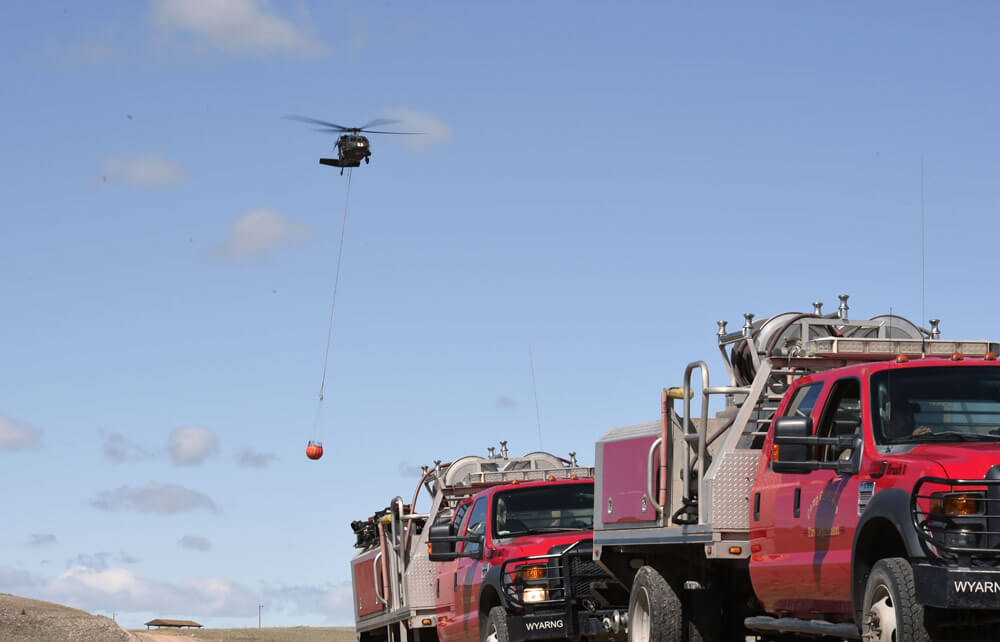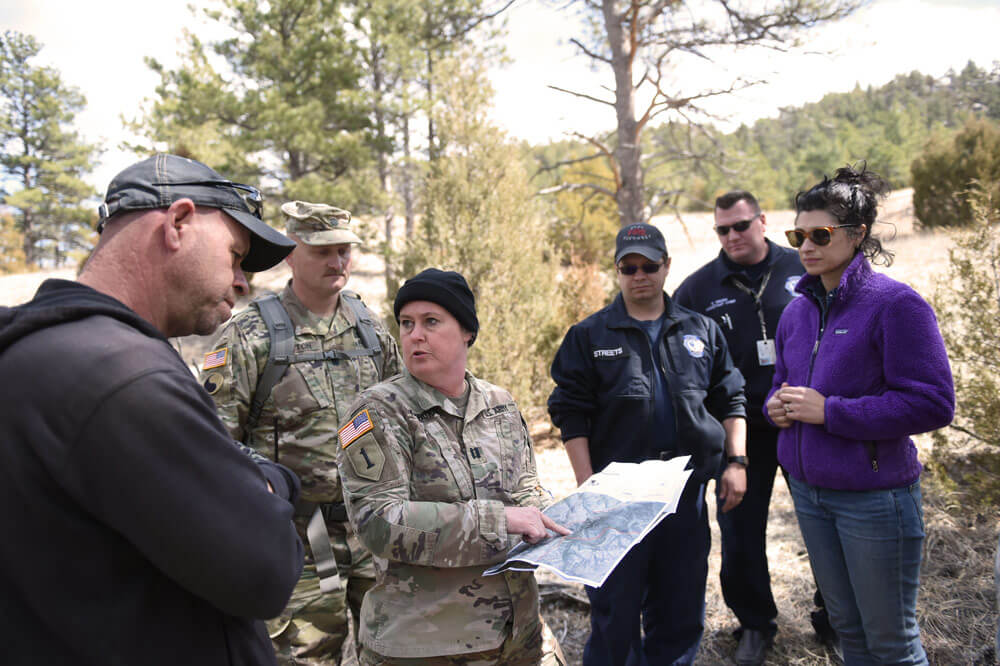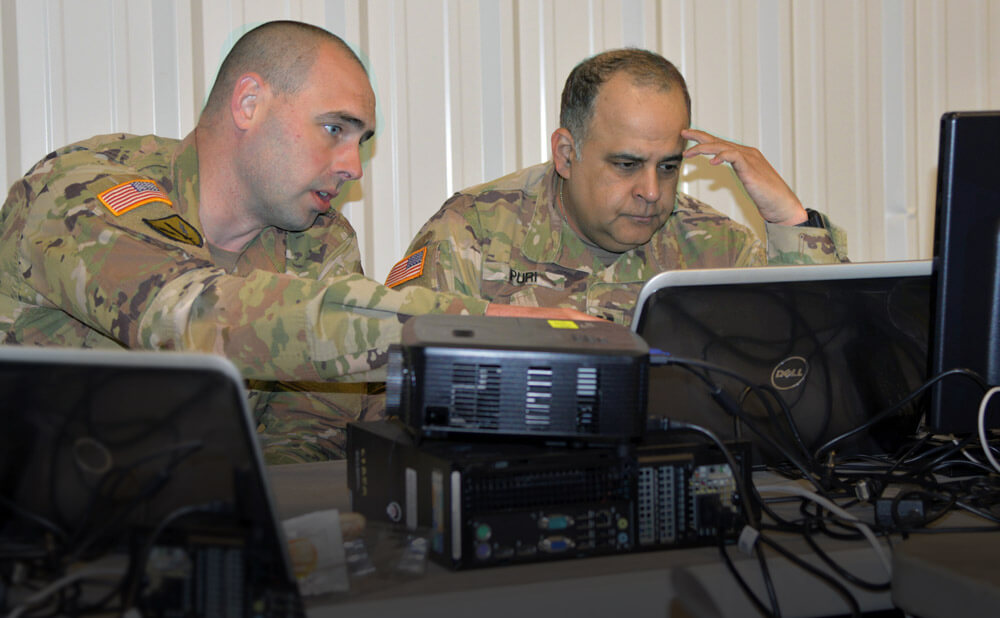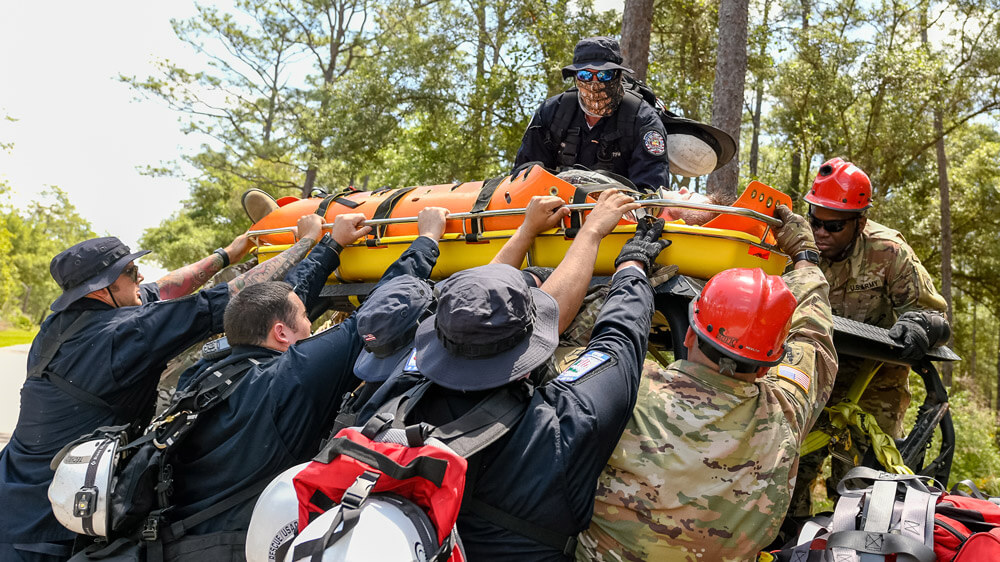It’s been six years since a fire jumped the fence at Camp Guernsey, Wyoming. Since then, many efforts have been made to ensure it doesn’t happen again at a place involved in the risky business of enabling military members to practice blowing things up.
“We owe our neighbors in the area extreme vigilance regarding fires and a highly trained and responsive wildland firefighting capability,” said Wyoming National Guard MG Luke Reiner, the adjutant general of Wyoming. “Our goal is to prevent fires from occurring, but if they do, our task is to quickly and efficiently put them out.
“In that same discussion, however, we also have to realize that we are a joint premier training center – one that offers a phenomenal training venue to our nation’s warriors – men and women who need to be highly proficient in their warfighting tasks before they deploy.”

COL Joe Huss, commander of the Camp Guernsey Joint Training Center, said he relies heavily on the “expertise of the fire department. We get them the resources they need, and we’ve really established a battle rhythm. Prescribed fires are up, and real fires are down. That’s a good thing.”
The camp’s fire department leadership is optimistic but not ready to rest on its laurels, according to Assistant Fire Chief Chad Brush. He says the additional resources, a motivated staff and an energized mitigation plan are factors that encourage him and create synergy in the department.
“We seem to be managing our resources better and making excellent use of our time, reducing fuel for fire,” Brush said. “Command is really supportive. They encourage us to conduct controlled burns, and we’ve really got a handle on the perimeter. The boundaries are really tightened up. You can’t help where a lightning strike hits, but what we can control is really helpful.”
The full-time firefighting staff is augmented by traditional National Guard Soldiers who work one weekend a month and two weeks a year at the camp as firefighters. The camp also has a cooperative agreement with neighboring fire departments that allows the sharing of resources when needed.
A good example of partnering resources was a recent exercise involving the Army National Guard’s UH-60 Black Hawk pilots and crews from G Company, 2nd Battalion, 211th Aviation Regiment. During the two-day exercise, the fire department burned about 120 acres and helicopter crews practiced dropping water from the air – something they may be called on to do should a fire get away from ground crews.
Helicopter crews dropped more than sixty 600-gallon buckets of water dipped from the Guernsey Reservoir. “I think the helos met their goals, and we got a lot of good fire department experience, too,” Brush said. “They got to see some smoke patterns and fire behavior – a lot of real-world stuff.”
BY SFC Jimmy McGuire, WYOMING National Guard



